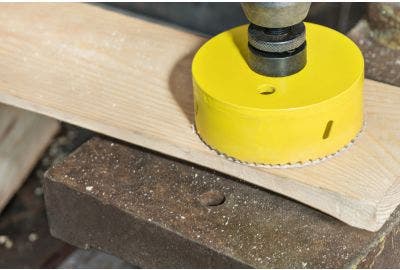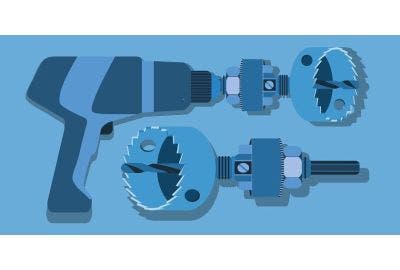If you’re into DIY or just getting started with woodworking, a saw is one of those tools you can’t really do without. It’s the go-to tool for cutting wood, metal, plastic—pretty much anything that needs shaping or resizing. But with so many options out there, picking the right one can be a bit tricky.
Some saws are best for straight, clean cuts, while others are great for detailed, curved designs. You’ve got hand saws, power saws, and everything in between, each designed for a different kind of job. And let’s be honest, using the wrong saw can turn what should be a simple task into a real headache—rough edges, splintered wood, or even worse, a blade that just won’t cut through.
In this guide, we’ll walk through the different types of saws, what they’re best for, and how to choose one based on the materials you’re working with. Whether you’re looking for something versatile or a saw that’s made for a specific task, you’ll have a clearer idea of what to go for by the end.
What Are the Different Types of Saws Available?

Saws come in all shapes and sizes, each built for a specific type of cut or material. Whether you're trimming wood, slicing through metal, or making intricate shapes, there’s a saw designed for the job. Below is a breakdown of some of the most commonly used saws and what they’re best suited for.
| Saw Type | Key Features | Best For |
| Hand Saw | Simple design, long blade with a handle, no power needed | General woodcutting, quick straight cuts |
| Coping Saw | Thin, flexible blade, C-shaped frame | Detailed, curved cuts in wood, plastic, and metal |
| Crosscut Saw | Sharp, angled teeth for smooth cuts across wood grain | Cutting wood across the grain for clean, precise edges |
| Circular Saw | Electric-powered, spinning toothed blade | Fast, straight cuts in wood, plastic, and some metals |
| Plunge Saw | Adjustable blade depth, track-guided cutting | Clean, precise cuts in sheet materials like plywood |
| Jigsaw | Small, electric, moves up and down | Cutting curves, intricate patterns, and irregular shapes |
| Hacksaw | Fine-toothed, replaceable blades, metal frame | Cutting metal, plastic pipes, and even ceramic |
| Pruning Saw | Curved blade, sharp teeth, often foldable | Cutting tree branches and thick shrubs |
| Hole Saw | Circular blade attachment for drills | Drilling large, round holes in wood, plastic, and metal |
| Chainsaw | Rotating chain with sharp teeth, petrol or electric | Cutting thick logs, tree branches, and heavy-duty woodwork |
Each of these saws has a specific role, so choosing the right one depends on what you're cutting and how precise you need to be. If you’re only working on occasional DIY projects, a hand saw or jigsaw might be enough. But if you need power and precision, a circular saw or plunge saw could be a better fit.
How to Choose a Saw

With so many saws available, picking the right one isn’t just about grabbing whatever looks sharp. The right choice depends on what you're cutting, how precise you need to be, and how often you’ll be using it. If you’re on a budget, a versatile saw that handles most tasks is a good starting point. But if you’re working on specific projects, it’s worth considering a tool designed for the job.
Here’s what to keep in mind when choosing a saw:
1) Determine What Material You Need to Cut
The type of material you’re working with plays a huge role in the saw you’ll need. Some blades are made for softwood, while others can slice through metal, tiles, or even stone. Below are some common saw blade types and what they’re designed for:
- Band saw blade – Great for cutting irregular shapes in wood or metal.
- Circular saw blade – Used for making straight cuts in wood.
- Diamond saw blade – Contains diamond-tipped teeth for cutting nonferrous metals, ceramics, glass, and stone.
- Scroll saw blade – Ideal for detailed curved lines in wood and plastic.
- Reciprocating saw blade – Moves back and forth, commonly used in construction and demolition.
- Jigsaw blade – Cuts curved, irregular, and ornamental lines in wood and plastic.
- Concrete saw blade – Built for cutting through concrete and cement.
- Tile saw blade – Perfect for cutting ceramic tiles, granite and stone.
If you’re working on different materials, having interchangeable blades can help you get more use out of a single saw.
2) Plan What Type of Cuts You Need to Make
Different saws excel at different cuts. If precision is a priority, you’ll need a tool that offers control and accuracy. Here’s a quick guide:
- Basic hand saws – Work for most straight cuts but lack precision.
- Jigsaw – Great for curved and detailed cuts.
- Mitre saw – Best for angled cuts, such as skirting boards or picture frames.
- Circular saw – Ideal for long, straight cuts in thick wood.
If your project requires multiple types of cuts, consider a saw with adjustable settings or multiple blade options.
3) Decide What Manoeuvrability You Need from a Saw
Not all saws are equally easy to move around. If you need flexibility, especially for intricate work, some saws are better suited than others:
- Coping saw – Features a C-shaped frame, making it great for cutting inside objects like wooden or metal designs.
- Hacksaw – Similar frame design, allowing for more controlled cuts.
- Cordless saws – Offer unrestricted movement, making them ideal for working in spaces without easy access to power.
If you’re tackling large, stationary projects, a corded saw will provide consistent power. But for jobs that require mobility, cordless options or hand tools might be the better choice.
Frequently Asked Questions

Choosing a saw isn’t just about picking the right type—there’s a lot more to consider. From key features to safety tips, proper maintenance, and whether one saw can handle multiple tasks, these common questions will help clear things up.
What Are the Key Features to Look for When Buying a Saw?
A good saw isn’t just about the blade—it’s about how comfortable and efficient it is to use. A sturdy, ergonomic handle makes a big difference, especially if you’ll be using the saw for long periods. Grip quality matters too, since a secure hold helps with both control and safety.
Blade thickness is another key factor. A thicker blade tends to be more stable, reducing flex when cutting through tough materials. Teeth geometry plays a role in cutting performance, with fine teeth providing smoother results and coarse teeth cutting faster but leaving rougher edges.
Blade tension is something to check as well. A blade that stays rigid under pressure will offer better precision and cleaner cuts.
What Safety Precautions Should I Take When Using a Saw?
Using a saw might seem straightforward, but a few simple precautions can prevent accidents.
Safety glasses or goggles should always be worn to protect your eyes from flying debris.
Choosing the right saw size and shape for the task reduces strain and improves control.
The number of teeth on the blade also matters—finer teeth work better for precise cuts, while coarser ones handle quick, rough cutting.
Before making a cut, it’s important to check the material being worked on. Nails, screws, or unexpected obstacles in wood or metal can cause kickback or damage the blade.
Proper hand placement is crucial too. Keeping hands away from the cutting path and maintaining a firm grip helps prevent slips that could lead to injury.
How Can I Maintain and Care for My Saw to Ensure Its Longevity?
A well-maintained saw lasts longer and performs better. Storing it in a dry place prevents rust from forming on the blade, which can dull its cutting ability over time. A light coat of lubricant applied after each use helps keep the blade in good condition—wiping it on and letting it sit for a few minutes before removing any excess works well.
Wooden handles also need occasional care. If signs of rust appear around the slot where the blade fits, taking the handle apart and cleaning it out will help preserve its lifespan. Sharpening the blade is another key step. Using a file that matches the saw’s tooth profile restores sharpness and makes cutting easier.
What's the Difference Between Corded and Cordless Saws?
The choice between a corded or cordless saw depends on power needs and mobility.
A corded saw is better suited for heavy-duty tasks, offering consistent power without the need to recharge. It also tends to be more powerful, making it the preferred option for cutting through thick or dense materials. However, the power cable can limit movement, which might not be ideal for some projects.
Cordless saws, on the other hand, offer convenience and portability. They are easier to move around and don’t require a constant power source, which is especially useful for outdoor or remote work. While they are typically lighter and smaller than their corded counterparts, they do have less power, so they may not be the best choice for extended cutting sessions or tough materials.
Can I Use One Saw for Multiple Tasks, or Do I Need Specialised Saws for Different Projects?
A single saw can handle a variety of tasks, but for precise or specialised cuts, certain saws perform better than others. A standard hand saw is good for general woodcutting, but if the goal is clean, precise work, other options are worth considering. A tenon saw, for example, is often used by carpenters for neat, accurate cuts.
Plasterboard saws are designed for cutting out small sections without causing unnecessary damage to surrounding areas. A circular saw works well for cutting through different types of wood, including flooring and worktops. A jigsaw is a solid choice for both straight and intricate cuts, making it a good all-rounder for detailed woodworking or cutting into pipework. Mitre saws are particularly useful for making accurate angled cuts, such as those needed for skirting boards or picture frames.
While some saws can be adapted for multiple tasks, using the right one for the job makes a noticeable difference in both efficiency and the final result.
Having the right saw makes a big difference in the quality of your work, whether you’re cutting wood for a DIY project or tackling more demanding materials like metal or tile. With so many different types available, understanding what each one is designed for helps you make the best choice for your needs.
A versatile hand saw is great for general use, while a jigsaw or circular saw offers more precision and power for specific tasks. If you work with a variety of materials, choosing a saw with interchangeable blades can be a cost-effective solution. And when it comes to durability and performance, regular maintenance—like sharpening the blade and keeping it clean—goes a long way.
For anyone looking to buy a quality saw, Heamar offers a wide selection, expert guidance, and competitive pricing. Whether you need a tool for home improvement or professional projects, you’ll find plenty of options on our website.






















